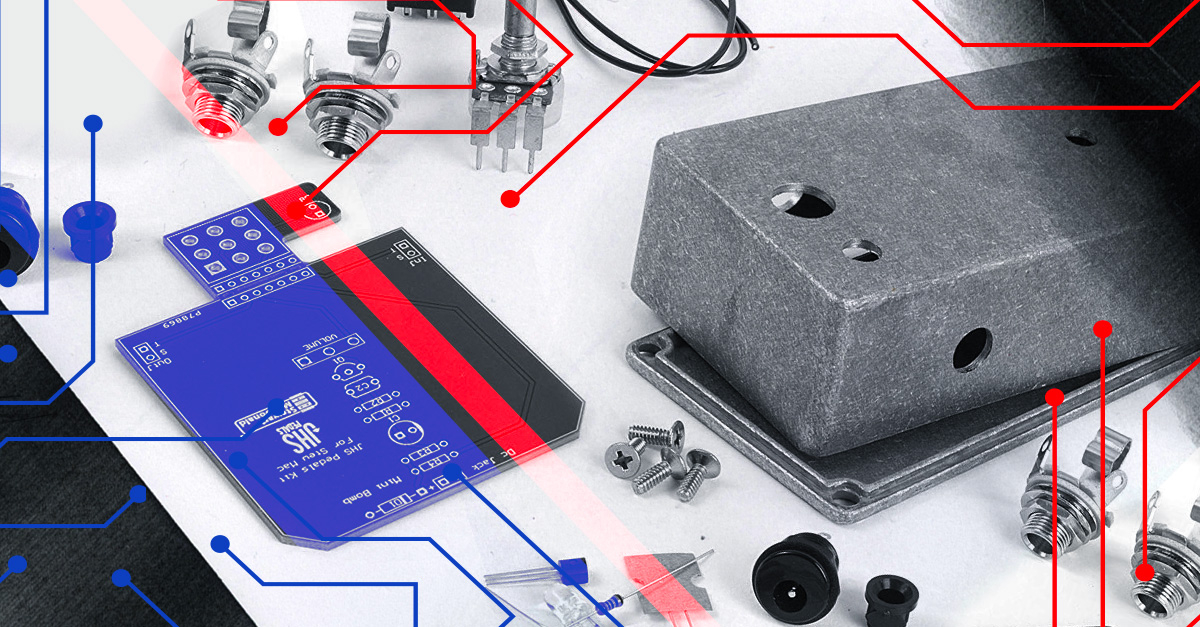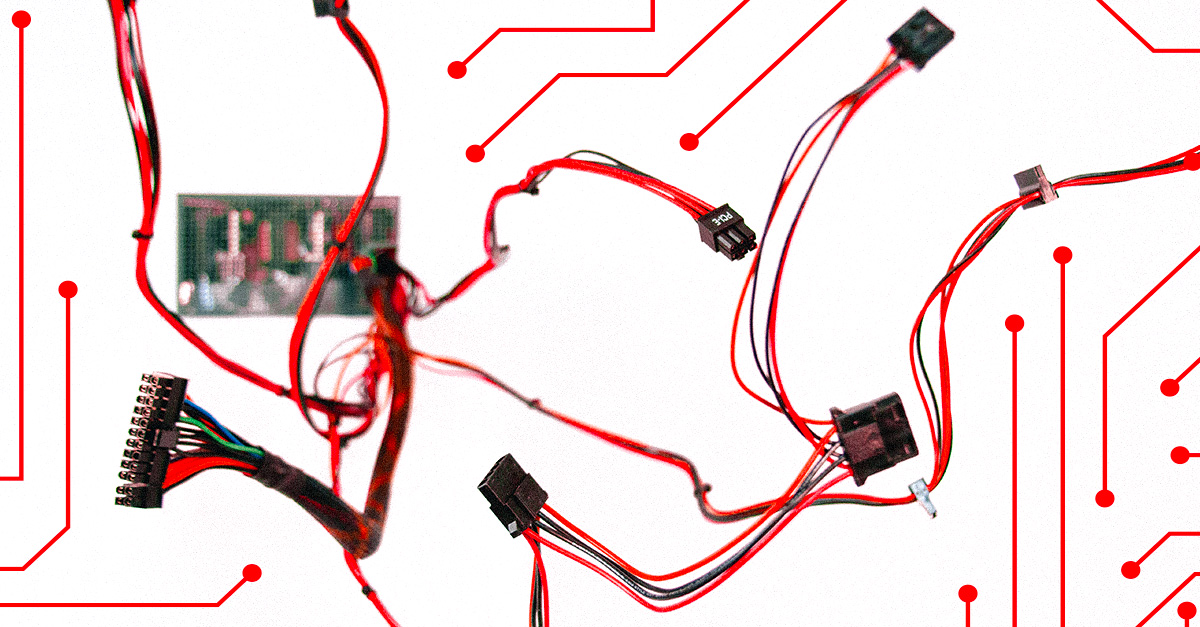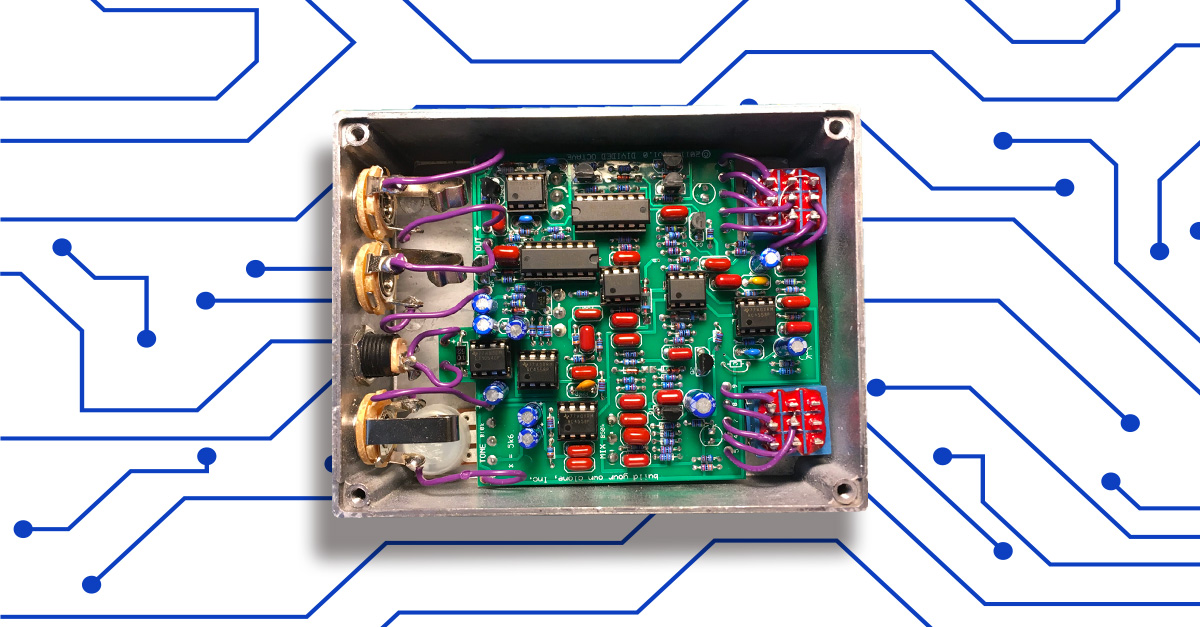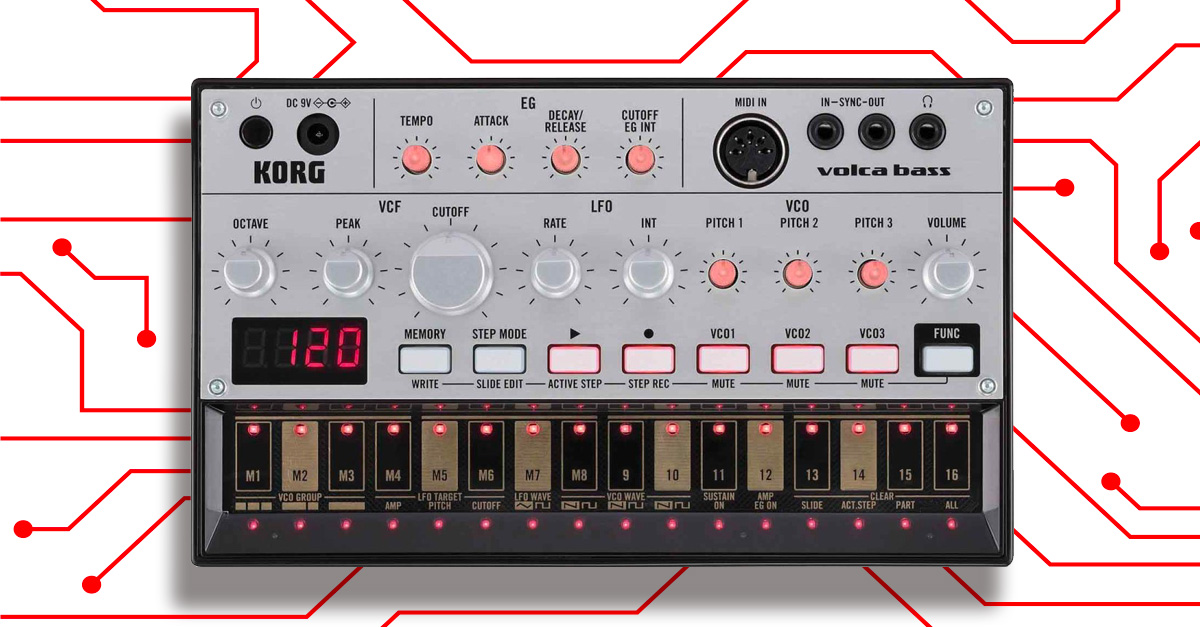
Circuit Bending: Why You Should Try Modding Your Gear

Rules were meant to be broken. Your gear is no exception. Modding and circuit bending your gear can be fun, educational and give you access to amazing sounds—without having to buy something new.
But getting started with modding is a daunting subject, especially when your gear is on the line.
In this article I’ll give you some ideas and inspiration that will help you feel good about picking up a soldering iron.
What is gear modding?
Modding is changing the circuitry of your gear to make it sound or perform better.
That could mean swapping components, adding features or changing the circuit’s behaviour through circuit bending

You don’t have to completely rearrange the guts of your gear to make it sound better or more to your taste. Mods can be straightforward enough to dive in with little or no experience.
You don’t have to completely rearrange the guts of your gear to make it sound better or more to your taste.
Here’s 3 of the most common ways to start modding your own gear. But there’s a whole world of modding out there to be discovered so don’t stop at these suggestions.
Why should you try modding your gear?
It’s easy to think of a piece of gear as a mysterious box that generates its sonic effect with dark magic.
But any piece of equipment is a just a series of electronic components and processes.
Modding your gear puts you in direct contact with the circuits that ultimately create the sound of your tools.

Learning how signals and circuits affect your sound gives you a level of insight into your tools that can change your whole workflow.
Any piece of equipment is a just a series of electronic components and processes.
Modding pedals
Pedal modding has turned into an entire cottage industry with manufacturers like Analogman, Robert Keeley, and JHS offering branded mods to popular pedals like the Ibanez Tube Screamer.

But there’s no reason you can’t recreate some of the same circuit tweaks with your own tinkering.
Popular pedal mods include adding features like:
- true bypass
- alternate clipping options
- different ranges of gain or tone control.
The best platform pedals for mods are often some of the cheapest out there on the used market.
You might be surprised by how close the circuits of some high-end effects are to common mass produced pedals. Modding can get you those boutique tones without the high prices or waitlists.
There’s great communities online to help you get started with mods. Check out DIYStompboxes.com and GeoFex for a treasure trove of great modding information.
If you get even more ambitious you can jump into making your own builds of classic circuits with kits from resources like Build Your Own Clone or General Guitar Gadgets
Modding synths
Mods are definitely not just for guitarists. The synth mod community has some of the most insanely dedicated tinkerers out there.
The synth mod community has some of the most insanely dedicated tinkerers out there.
Adding modern features to lesser-known vintage units is a big part of why modding synths can be so awesome.
As prices for more desirable classics continue to climb, it’s still possible to get a slice of the vintage pie with mods.
Enter the legendary Moog Slayer mod. It can expand the tonal palette of lower-end vintage synths like the Poly800 by dramatically extending the filter’s range.
But the classics still aren’t safe when it comes to mods. The Devilfish TB-303 is a suite of mods to Roland’s beloved acid machine that transform it into a complete beast.
From opening up the relatively simple bass synth to extensive parameter control to adding features like onboard overdrive, this mod is powerful enough to warrant it’s own sample packs.
Even some of the most popular synths on the market are great platforms to mod. The Korg Volca series seems to have been built with modding unofficially in mind.

The experimentally minded started trying to mod the Volcas almost as soon as the series debuted.
Now there’s a dedicated community of Volca modders and lots of easy-to-follow tutorials online for adding features like individual outputs, CV I/O, VCO volume and more.
Circuit bending
The ultimate form of synth hacking is the wildest modding technique out there: circuit bending.
Circuit bending is an exploratory, unscientific approach to modding.
Instead of researching a mod and carefully putting it into practice to achieve the desired result, circuit benders use a variety of methods to probe a circuit board for “bends” while the device is still powered on!
By using alligator clips to close circuits between components that were never meant to be connected, circuit benders can uncover some incredibly unusual sounds.
By using alligator clips to close circuits between components that were never meant to be connected, circuit benders can uncover some incredibly unusual sounds.
In fact it’s not limited to synths at all. Electronic toys like the Speak & Spell are prime candidates for circuit benders to harvest and tweak into experimental noise machines.

What is Circuit Bending?
Circuit bending is a creative and experimental practice that involves modifying the internal circuitry of electronic devices, such as synthesizers, drum machines, and even children’s toys, to produce new and unexpected sounds.
This DIY approach to sound manipulation has gained popularity among musicians, producers, and sound artists alike, as it provides an affordable and accessible means to create unique audio experiences.
The art of circuit bending was pioneered in the 1960s by Reed Ghazala, who discovered the technique by accident while working with a damaged amplifier.
Since then, it has evolved into a thriving subculture within both music and sound design communities.
How Does Circuit Bending Work?
Circuit bending involves taking an electronic device apart and deliberately creating short circuits, or “bends,” by connecting different components within the device.
These connections often require soldering wires, switches, or potentiometers, but can also be as simple as using alligator clips or even just touching two points on the circuit board with a fingertip.
The goal of circuit bending is to find and exploit the “happy accidents” that occur when the device’s original functionality is disrupted.
This can result in a wide range of outcomes, from interesting new rhythms and melodies to bizarre, glitchy textures that are impossible to achieve through traditional means.
Because circuit bending is best done while a device is still on—you need to hear how the changes you’re making to the circuitry affect the sound—most circuit benders work on battery powered devices.
Safety and Circuit Bending
While circuit bending can be a fun and rewarding pursuit, be aware of the potential hazards associated with working on electronic devices.
To minimize the risk of injury, always follow these safety guidelines:
- Unplug the device: Before working on any electronic device, make sure it’s turned off and disconnected from any power source.
- Use a multimeter: A multimeter is a helpful tool for identifying components and checking for voltage within a circuit. Always use a multimeter to verify that there are no hazardous voltages present before touching a circuit.
- Be cautious with batteries: Some devices use batteries as their power source. Be mindful of the battery’s orientation and avoid short-circuiting the terminals.
- Wear safety gear: Use safety glasses to protect your eyes from any possible debris or sparks while working on a device. Additionally, wearing gloves can help protect your hands from sharp edges or heated components.
The best thing about circuit bending is that it requires almost no tools, experience or gear. Just head on down to your local charity shop, pick up anything that makes noise and start bending it.
Just be careful never to bend anything that’s connected directly to AC power.
By understanding the basics of circuit bending and practicing safe techniques, you too can unlock a world of sonic possibilities with your modified gear.
If your curious, Circuitbenders.co.uk is a great online community to get you started with circuit bending.
Hack your gear
Modding gear is one of the most fun ways to get a sense for how electronic circuits affect your sound.
Whether it’s modding pedals, synths, or circuit bending an old Speak & Spell, getting started with mods will let you get hands on with your gear.
Next time you feel the urge to buy a new piece of gear, consider modding something you already have. It could be all you need to get the tones you want.
Gear guides, tips, tutorials, inspiration and more—delivered weekly.
Keep up with the LANDR Blog.




